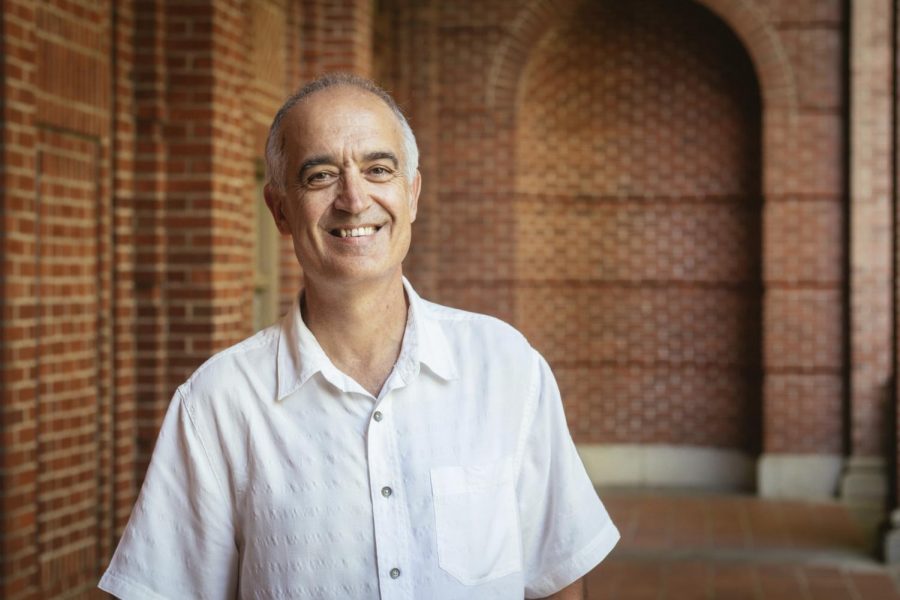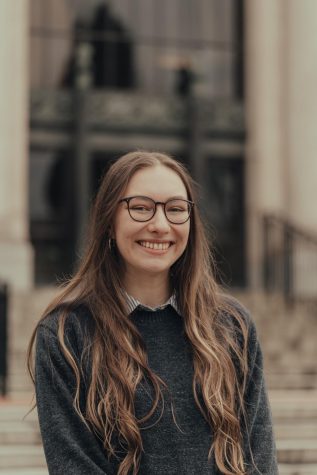Update: TRACE-COVID-19 project aims to assess, understand coronavirus spread in Corvallis community
April 17, 2020
Oregon State University researchers and scientists, in partnership with the Benton County Health Department, hope to use the new TRACE-COVID-19 project to better understand how prevalent the virus is throughout the Corvallis, Ore. community.
Team-based Rapid Assessment of Community-Level Coronavirus Epidemics, or TRACE-COVID-19 for short, will help track how the disease will spread and at what rate, since that information is currently limited, according to Jane Lubchenco, OSU professor in the department of Integrative Biology and co-principal investigator on the TRACE-COVID-19 study.
In an email sent out to all OSU students on April 16, OSU President Ed Ray said this project is the first of its kind in the US, where community members will be tested for COVID-19, regardless of if they are symptomatic or asymptomatic. With limited testing available throughout the state and nation, this project, if successful, will better show how many people actually have the virus.
TRACE-COVID’s results will allow public health and government leaders to better guide efforts to combat the virus, according to Ray’s email. The pilot phase of this project is set to begin Sunday, April 19, and starting on April 25, 960 local residents of Corvallis will be safely tested in their households over four consecutive weekends.
According to Steve Clark, vice president of University Relations and Marketing, the TRACE-COVID-19 project shows how collaborations between OSU students, faculty and other public partners are able to effectively work together to overcome real-world problems within our community.
“The teams going door-to-door will be made up of [two to three] individuals,” Clark said via email. One member will be a traditional health worker from one of our local health agency partners, while OSU students will be members of the balance of each team.”
The field staff team will have been tested for the virus themselves prior to participating in this project and will be trained and certified.
The household members will fill out a consent form, as well as answering a short health questionnaire and providing basic information such as their name, date of birth, contact information and demographic information to the field staff, according to the TRACE-COVID-19 website.
The field staff will wait outside of the household in order to maintain social distancing guidelines, while the test is being administered. The test consists of a nasal swab, which then is placed in a plastic tube, swab side down, into a liquid that will deactivate the virus, and preserve it for analysis. Once the plastic tube is closed, it is placed in a plastic bag, which the participant will disinfect using the provided wipe. The bag is then placed in a sanitized tub provided by the field staff on the doorstep of the household, for the field staff to retrieve.
OSU has partnered with Willamette Valley Toxicology Lab, which will be analyzing all test data the TRACE-COVID-19 project collects. The lab is able to test hundreds of samples a day.
Participants will receive their test results within seven-10 days. The survey process will remain confidential, with only participants’ test results being reported to the Benton County Health Department, following Oregon requirements for all laboratories to report COVID-19 test results to county health departments.
The households invited to participate in this study were randomly pre-selected, with a few households chosen from each neighborhood in order to ensure the test results are representative of the whole community.
This test, at this time, is only available to those who live in the randomly-selected households. The test is free of charge, and household members can decline the test if they wish.
Although this project is only providing testing to the 960 selected community members at this time, Brett Tyler, director of the Center for Genome Research and Biocomputing at OSU, whose role in the project is to oversee data management and virus RNA sequencing, said via email, “Efforts are underway to expand testing through additional funding and engagement of additional regional partners.”
According to Jeff Bethel, associate professor in the School of Biology and Population Health Sciences, and one of the leading principal investigators of the project, they are using census blocks to help identify which households to recruit into the study.
“Unfortunately, campus buildings, including residence halls, are not included in the census blocks. However, students living off campus are eligible if the neighborhood in which they live is randomly selected,” Bethel said via email.
According to Javier Nieto, dean of the College of Public Health and Human Sciences and a co-principal investigator for the study, the principal investigators are thinking about antibody testing to better understand who has been exposed and immune to the disease, but that type of testing requires a blood sample, and in turn, requires personal protective equipment which is in very short supply at the moment. An antibody test would be important, but they do not have the capacity to do it in this study right now.
“Our goal, if we are successful, would be to share our methodologies and our approach with all other land grant universities in the United States,” Nieto said.
A press release published on April 16 said the TRACE-COVID-19 study will contribute crutial information to the community about how widespread the disease may actually be, and show how the pandemic is constantly changing and how effective public health recommendations from Oregon Gov. Kate Brown and the Center for Disease Control are.
Lubchenco said the results of the study will inform future decisions regarding the rollback of social distancing and will provide people who get tested with more context for making decisions about which safety measures they need to take.
“This information is key to good decisions about the rate and manner in which stay-at-home orders and social distancing can be relaxed, businesses can be reopened and classes can be resumed,” Lubchenco said via email. “This information will also help those individuals who are tested make smarter decisions that will keep themselves and their families and friends safe.”
According to Tyler, the project will show how the virus has spread among people who show no symptoms or are only mildly displaying them.
“This project represents a terrific example of the OSU research community and leadership pulling together with regional partners to set up and execute a project that contributes critical information needed to manage the [pandemic] and protect Oregonians,” Tyler said via email.
Current funding for the project is provided by OSU and the David and Lucile Packard Foundation, a private foundation that provides grants to not-for-profit foundations.
Nieto emphasized the importance of the collaboration between the College of Public Health and Human Sciences, the College of Science, the College of Agricultural Science, and the College of Veterinary Medicine. The College of Veterinary Medicine has partnered with the Willamette Valley Toxicology Lab to provide clinical testing capacity to healthcare providers in the area.
“Each person on the team – the seven Principal Investigators and other experts – brings valuable expertise, relationships and skills to the project. It’s a wonderfully collaborative and dedicated team that has mobilized very quickly to help in this time of crisis. Many of our undergraduate and graduate students are involved in different aspects of the project,” Lubchenco said via email.
Benton County currently has 27 confirmed positive cases and four deaths as of April 17, with a total of 601 tests having come back negative.
More information regarding TRACE-COVID-19 can be found here.

















































































![Newspaper clipping from February 25, 1970 in the Daily Barometer showing an article written by Bob Allen, past Barometer Editor. This article was written to spotlight both the student body’s lack of participation with student government at the time in conjunction with their class representatives response. [It’s important to note ASOSU was not structured identically to today’s standards, likely having a president on behalf of each class work together as one entity as opposed to one president representing all classes.]](https://dailybaro.orangemedianetwork.com/wp-content/uploads/2025/03/Screenshot-2025-03-12-1.00.42-PM-e1741811160853.png)

























